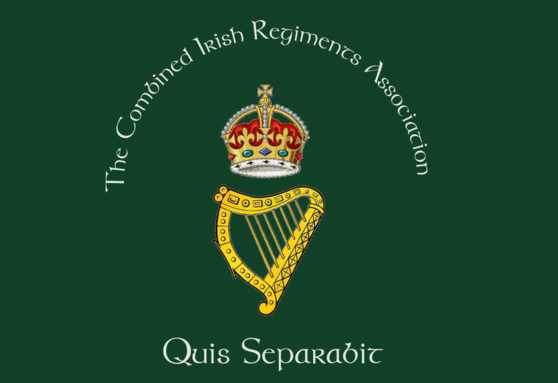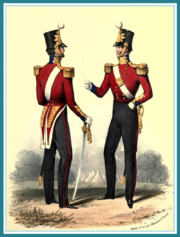
ROYAL IRISH REGIMENT (18TH FOOT).
Under Oliver Cromwell and Charles II, Ireland was garrisoned by independent companies of musketeers and pikemen. In 1684, during the last year of Charles’s reign, several of these companies were gathered together by the Earl of Granard into a regiment on the Irish Establishment. This was a reward for fighting for the Stuarts in Scotland during the Civil Wars (1639-51) and working for Charles’s restoration.
In the conflict between Charles’ successor, James II, and his son-in-law, William of Orange (later William III), the Regiment split. Seven companies fought on James’s side and six on William’s and the latter were placed on the English establishment in 1689.
The Regiment fought for William and his successors in Flanders repeatedly throughout the 1690s and 1700s, interspersed with service as marines and garrison duty in Ireland and England. It took part in the capture of the French fortress of Namur (now in Belgium) on 20 August 1695 and, for its services there, William granted it the title ‘Royal Regiment of Ireland’, his family crest of the lion of Nassau, the Irish crowned harp and a motto mentioning the victory.
From 1718 to 1742, it was stationed on Minorca, though it was briefly back in Flanders in 1745 before returning to Britain during the aftermath of the Second Jacobite Rebellion (1745-46). In 1751 it was given a regimental numeral of 18, even though it was the seventh oldest British line infantry regiment at that date. It was pushed down the order of precedence as it had only entered the English establishment in 1689.
The Regiment then remained in Britain and Ireland until 1767, when it was deployed to Canada. Moving on to Philadelphia in 1767 and Massachusetts in 1774, it was still there on the outbreak of the American War of Independence (1775-83). It suffered such heavy casualties in the early part of the campaign that the few survivors had to be drafted to other regiments while the officers returned to Britain to re-recruit. It re-formed in Nova Scotia later that year and returned to England the following year.
It spent the early 1780s garrisoning the Channel Islands and Gibraltar against America’s French and Spanish allies. It was in action from the start of the French Revolutionary Wars (1792-1802), serving at the siege of Toulon in 1793, garrisoning Corsica in 1794 and again serving as marines in the Mediterranean in 1797. The Regiment also fought in Egypt in 1801 before returning to Ireland and was then posted to the West Indies from 1805 until the end of the war in 1814. For three of those years it was joined there by a 2nd Battalion.
The Regiment was stationed on the Ionian Islands in 1824 and then split in 1837, keeping four of its companies in England and Ireland while six went to Ceylon (now Sri Lanka). All the companies reunited in 1840, fighting in the First Opium War (1839-42) and the Second Burma War (1852) before forming part of India’s garrison until 1854, when the Regiment moved to the Crimea.
In 1857 the Regiment raised a 2nd Battalion again, this time out of volunteers from Ireland’s militia regiments. That year also saw the 1st Battalion return to India where it stayed for all but nine of the following 27 years. This included service in the Second Afghan War (1878-80). The 2nd Battalion was mostly stationed in England and Ireland from the 1850s through to the 1880s, though it served in New Zealand between 1863 and 1870.
Under the Cardwell reforms of 1881, the now redesigned The Royal Irish Regiment became the Regiment of Kilkenny, Wexford, Waterford and Tipperary. The 2nd Battalion fought in Egypt in 1882, and was joined there by the 1st Battalion in 1884. The latter fought in the Boer War, before returning to India in 1904 while the 2nd Battalion remained in India from 1884 until 1902 when it returned to Ireland.
The Regiment saw service during the First World War, suffering over 3,200 killed in action and thousands more wounded in places such as Le-Pilly, Gullimont, Ginchy, Salonika, Mesopotamia and Palestine. In 1916, the Regiment’s 3rd (Reserve) Battalion took part in the suppression of the Easter Rising in Dublin. The following year saw the South Irish Horse re-designated as the Regiment’s 7th Battalion.
Read more about the actions of the Royal Irish Regiment during the First World War.
In 1919, both regular battalions moved, the 1st Battalion to occupation duties in Germany and the 2nd Battalion back to India.
The Regiment was disbanded in 1922 as it recruited from counties in the newly formed Irish Free State.
Link to the Official History of the Royal Irish Regiment from 1684 to 1922.
(You will be taken to an external site).
